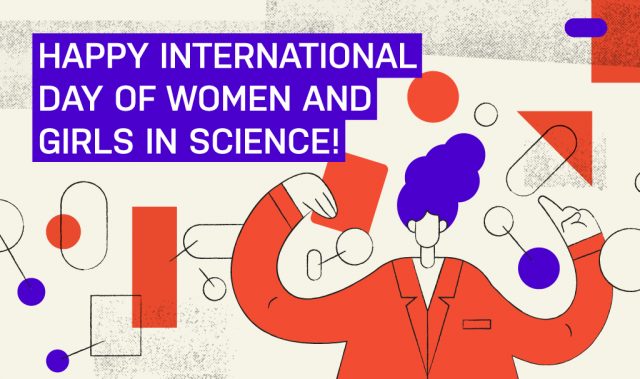
AsianScientist (Jun. 22, 2018) – A mastectomy and regime of chemotherapy helped Judy Perkins fight off her first bout of cancer in 2003, but by the time she was diagnosed with a relapse a decade later, the cancer had spread throughout her chest and progressed to her liver. This time the tumors were resistant to both hormone and chemotherapy. Doctors estimated that she had two to three months left to live.
In a last ditch attempt, Perkins signed up for a clinical trial for an experimental immunotherapy. Earlier this month, she appeared in a paper published in Nature Medicine as an unnamed 49-year-old woman who experienced “complete durable regression”—the closest that oncologists will come to describing a cure.
Enlisting the immune system
So what is immunotherapy and why does it seem so extraordinarily effective?
The main function of the immune system is to protect the body against anything recognized as foreign, be it bacteria, viruses, an organ transplanted from a donor or a fetus that only shares half your DNA. In immunotherapy, the full force of the immune system is unleashed against one particular type of foreign object: tumor cells.
The tricky thing about turning the immune system against tumors is that tumors are not fully foreign; they are essentially the same as healthy cells but for a few stealthy mutations. Cancers with an unusually high number of mutations—such as melanoma and smoking-induced lung cancer—are easier for the immune system to spot, explaining the success of immunotherapy in those specific cancers.
Breast cancers, however, tend to have fewer mutations. More generalized attempts at boosting the immune response, such as cytokine or interferon therapy and checkpoint inhibitors, are less effective at treating breast cancer. To treat Perkins, her doctors had to get a lot more specific.
What they did was to take out a tumor from her right breast, isolate the immune cells found within the tumor, and reintroduce those immune cells into her body. This approach of using cells known as tumor-infiltrating lymphocytes (TIL) is built on the basis that immune cells found in the vicinity of the tumor are those that have recognized and are trying to attack the tumor.
To increase their odds of success, Perkins’ team first sequenced the tumor, identifying 62 mutations specific to the cancer cells. The TILs were then screened to select those that responded most strongly to cancer-specific mutations. After expanding the reactive TILs to a 80-billion-strong population, the team infused the cells back into Perkins over seven sessions, then waited with bated breaths.
The results were nothing short of spectacular. Within ten days, Perkins could feel the tumor on her chest softening, and by six weeks her tumor burden had halved. Nearly two years after she received the TIL infusion, all her tumors had vanished and she remains cancer-free to this day.
Hold your horses
If you are a breast cancer patient reading this (as well as another recent report that many women may not require chemotherapy), you might be excited to give immunotherapy a try. But as inspiring as Perkins’ case may be, we need to be careful not to take her ‘cure’ as evidence of assured success.
The other patients trying the same treatment were not so lucky. Study leader Dr. Steve Rosenberg of the National Cancer Institute in the US said that only seven out of the 45 patients with cancers ranging from colon cancer to liver cancer were helped by the treatment, a response rate of about 15 percent.
Unlike more standard immunotherapies already on the market, using TILs is a highly personalized approach that remains experimental. Furthermore, no two cancers are alike; how each patient responds to a given treatment depends largely on the type of cancer and the specific mutations involved. In other words, just because it worked for Judy Perkins (or your aunty’s daughter’s colleague’s cousin) does not mean it will work for you.
To make matters even more complicated, immunotherapies themselves are not a single type of treatment but a wide range of very different approaches encompassing both more mature methods and ideas that are still experimental. A treatment that has been approved for one type of cancer does not necessarily work for other types of cancers. (On that note, a personal pet peeve: antibiotics do not work for viral infections, so don’t ask your doctor for them if your infection is viral.)
For example, chimeric antigen receptor T-cell (CAR-T) therapy—which has been hailed by the American Society of Clinical Oncology as the 2018 Advance of the Year—may be very successful at treating blood-borne cancers like leukemia, but is largely useless at treating solid tumors.
Do no harm
Nonetheless, buoyed by the hope of dramatic reversals like Perkins’ and others like her, patients have started demanding immunotherapy even in cases where it is unlikely to work, leaving doctors in an ethical bind. Should patients be allowed to try expensive immunotherapies that would leave them and their families in financial ruin for the infinitesimally small chance that they might work?
Worse still, because immunotherapies are so new, we know so little about how they work that they can sometimes backfire disastrously. By giving in to patients’ demands for immunotherapy, even when it is not medically warranted, doctors could be doing their patients more harm than good.
Recently, researchers had to prematurely stop a Phase II clinical trial to test the effectiveness of a checkpoint inhibitor called nivolumab or Opdivo against adult T-cell leukemia–lymphoma. All three of the earliest patients to participate in the trial, whose conditions were described as “smoldering,” saw their cancers become alarmingly aggressive after treatment. Although it is hard to be certain if nivolumab was the cause, the trial was called off as a precaution.
Evidence, not anecdotes
Though I am no longer a researcher, the intricacies of the immune system will always hold a deep fascination for me. In my mind, immunotherapy is amazing and we should be rightfully excited about its promise. But just like stem cells (and more prosaic supplements), there is a very long way from the petri dish to the patient.
While patients who are told they have only months left to live are understandably eager to jump on any treatment that might possibly help, we must not mistake anecdotes for evidence. Clinical trials might be slow, but unless we rigorously test immunotherapies and other novel treatments, we simply do not know if they will ultimately help or harm people.
In short, there is good reason to be optimistic about immunotherapy (and investors certainly are), but there is also a need to be cautious. Patients, please be patient.
This article is from a monthly column called From The Editor’s Desk(top). Click here to see the other articles in this series.
———
Copyright: Asian Scientist Magazine; Photo: Alex Ritter, Jennifer Lippincott Schwartz and Gillian Griffiths/National Institutes of Health/Flickr.
Disclaimer: This article does not necessarily reflect the views of AsianScientist or its staff.













